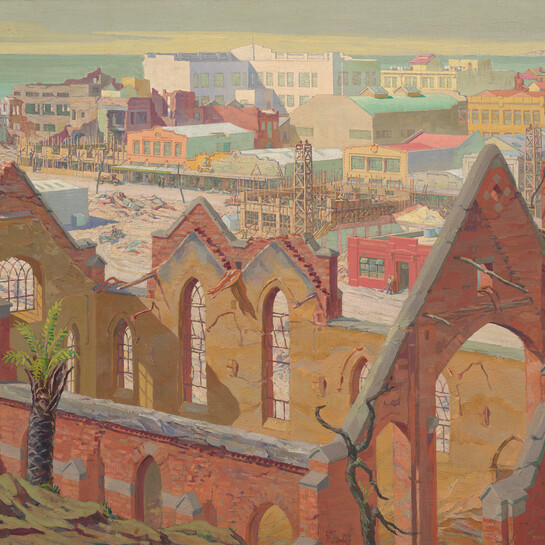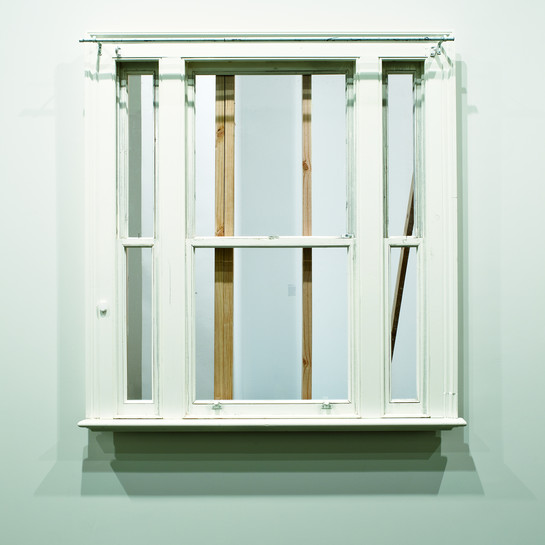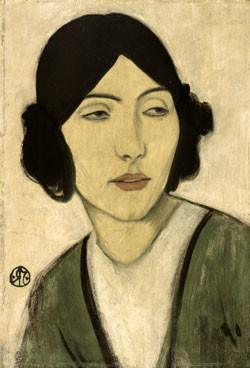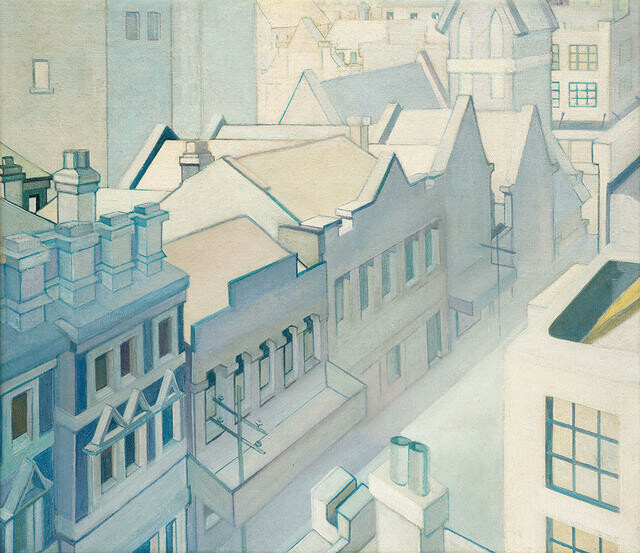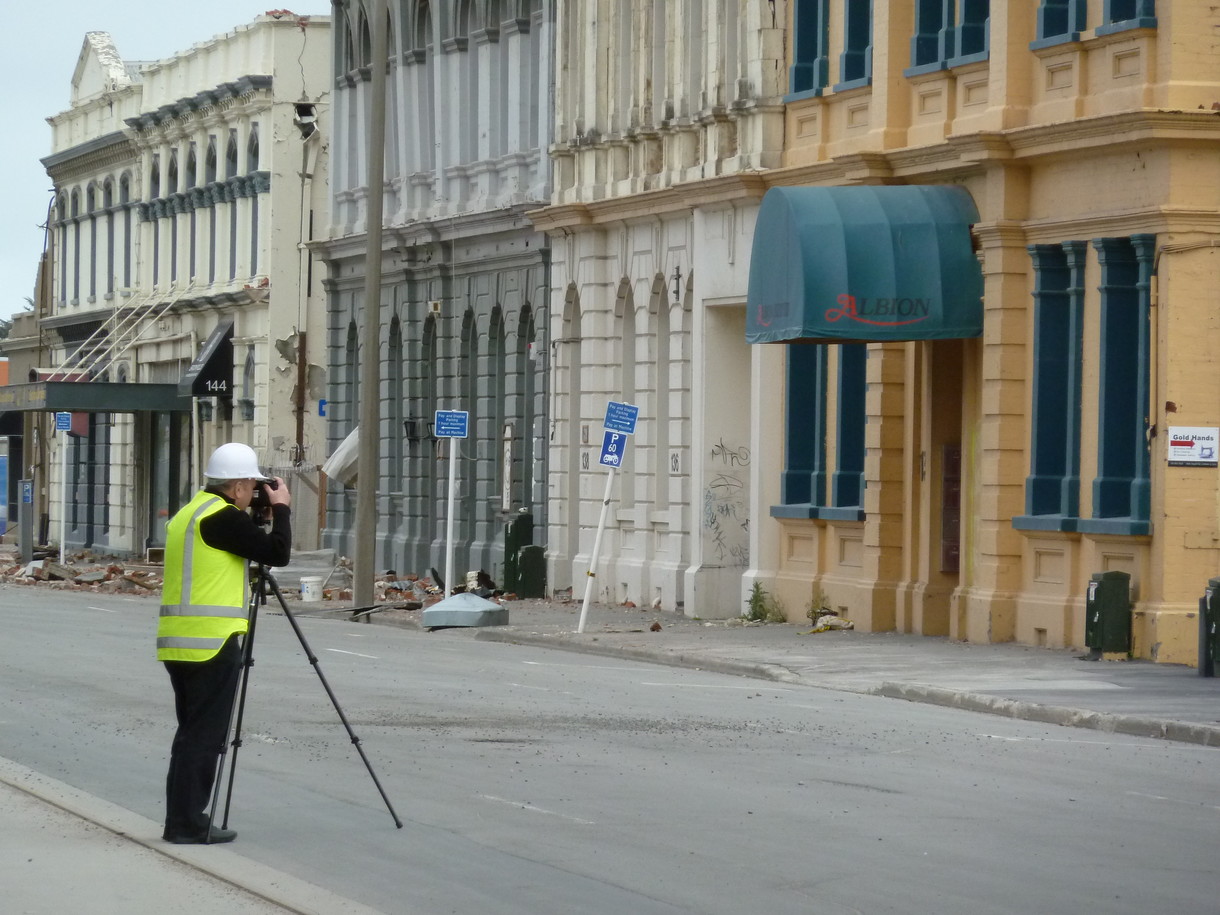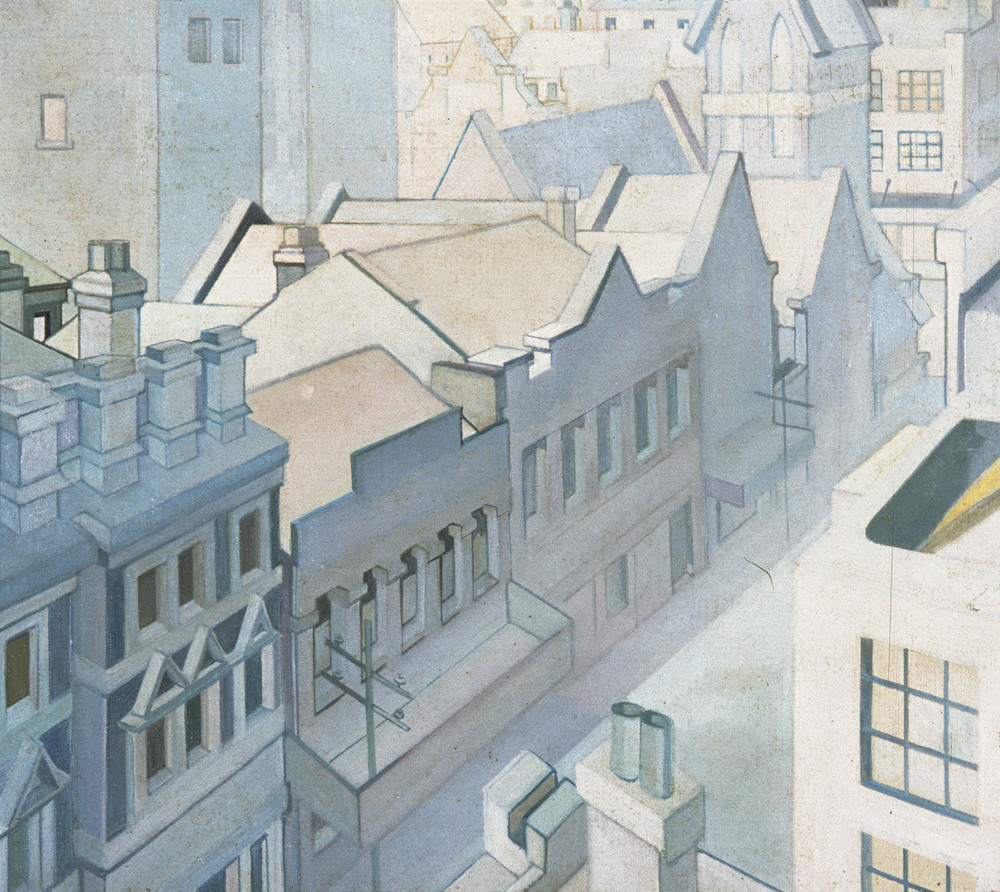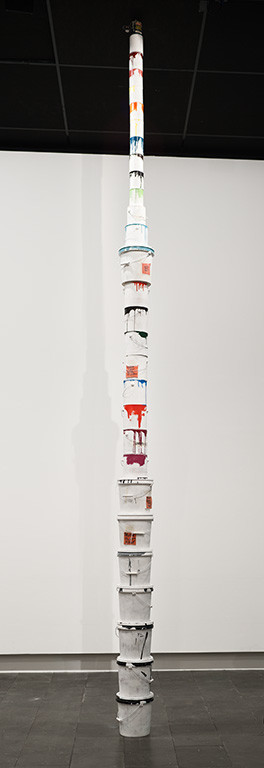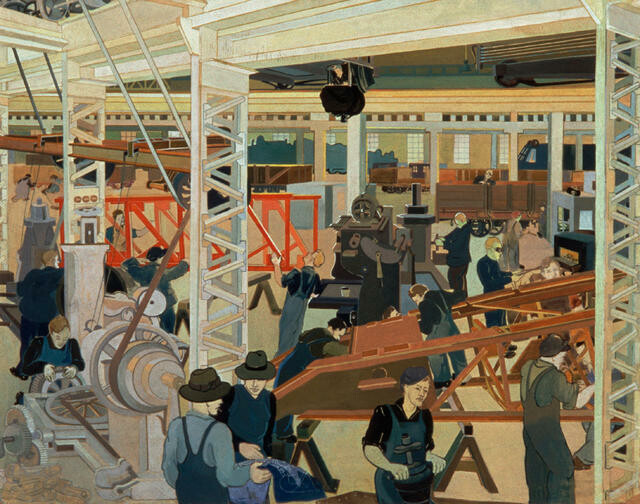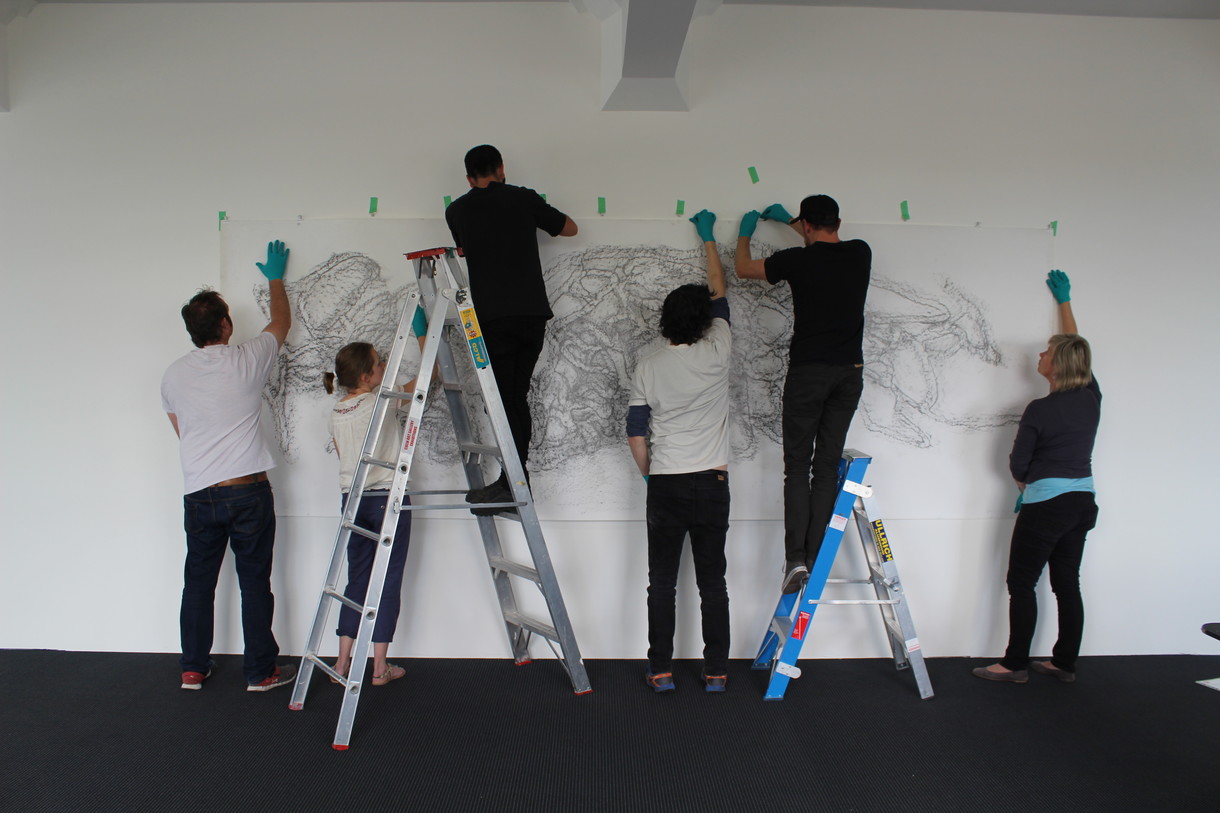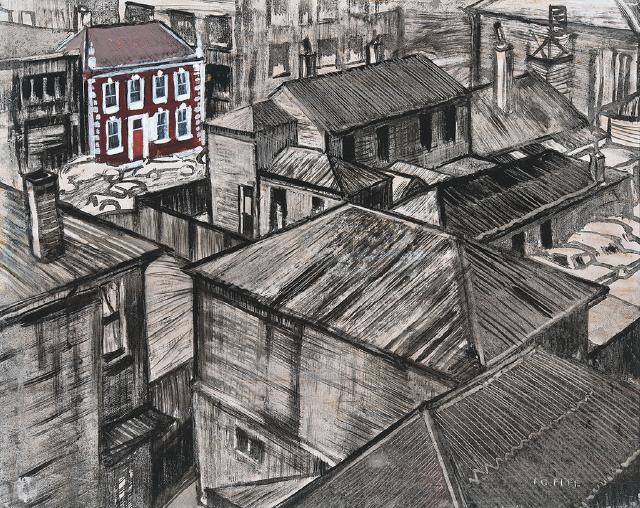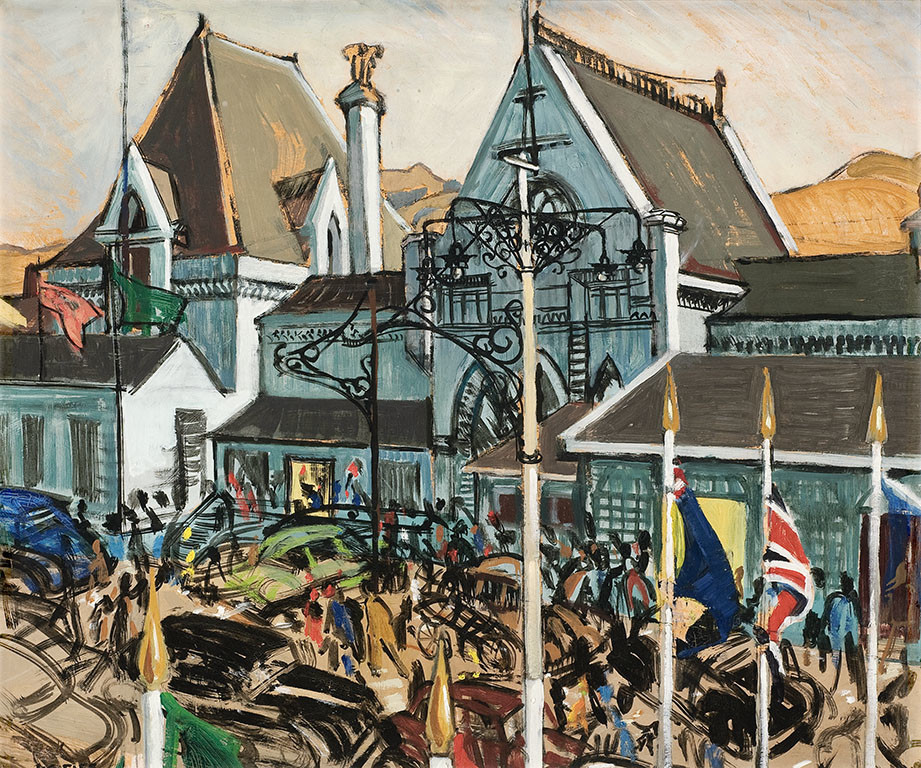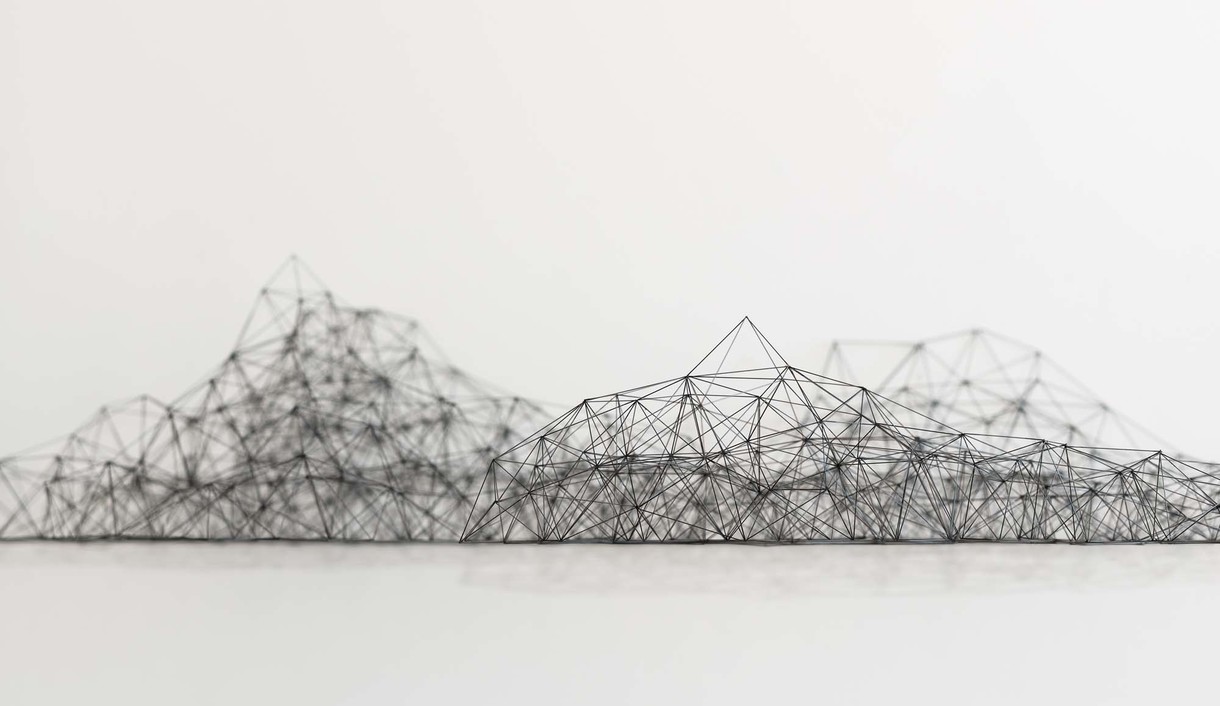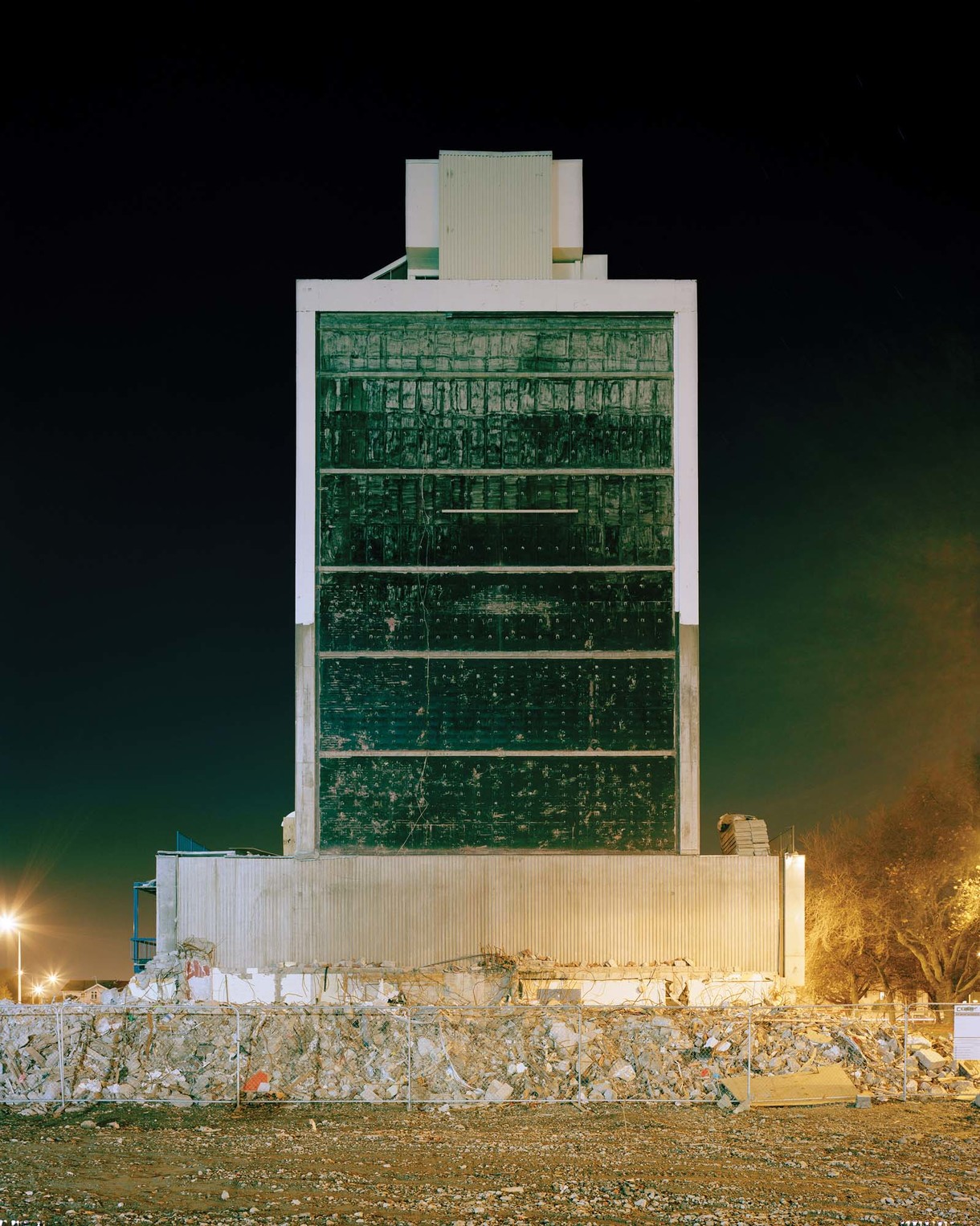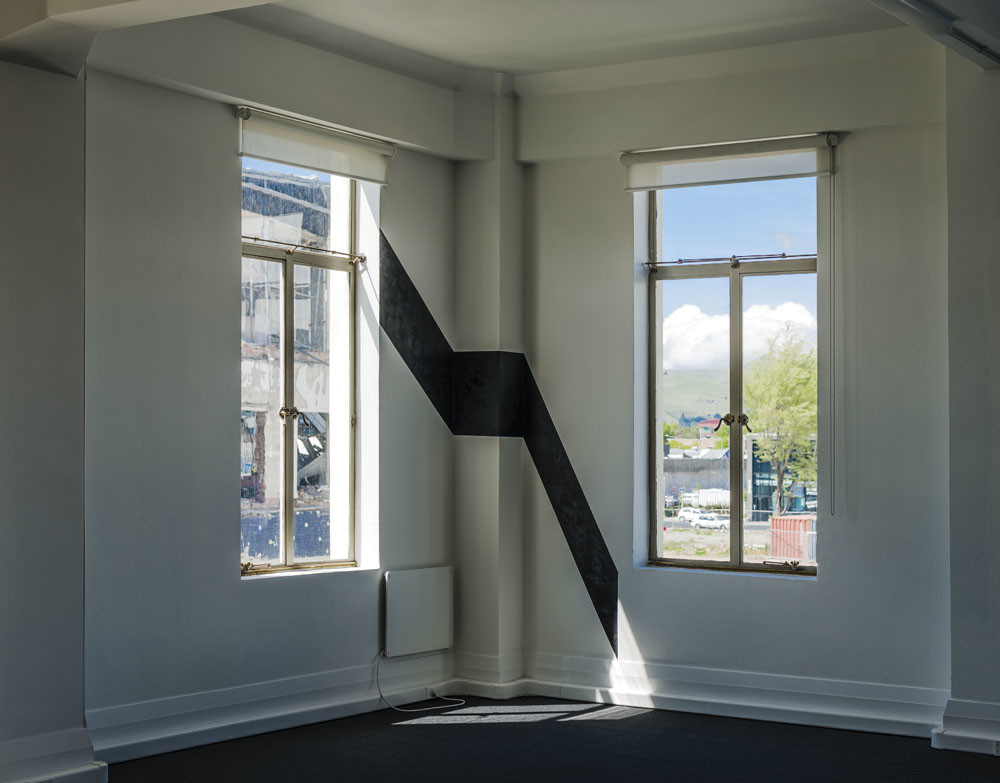Louise Henderson
France / Aotearoa New Zealand, b.1902, d.1994
Manchester Street, Christchurch
- 1929
- Oil on board
- Dame Louise Henderson collection, presented by the McKegg Family, 1999
- 530 x 590mm
- 99/68
- View on google maps
Tags: buildings (structures), chimneys (architectural elements), cities, gables (architectural elements), landscapes (representations), stores, urban landscapes, utility poles, windows
Paris-born Louise Henderson’s subtle architectural study cleverly frames a section of Manchester Street east of Cathedral Square in Ōtautahi Christchurch – a streetscape largely intact until the 2010–11 earthquakes. Her vantage point was the seven-storey New Zealand Express Company Building in Manchester Street (later known as Manchester Courts, and demolished after the earthquakes). The location of Henderson’s studio at this time is unknown, but it is tempting to speculate that this was the work she exhibited in 1933, titled View from Studio Window.
(From Here on the Ground, 18 May – 17 November 2024)
Exhibition History
Above Ground, 18 December 2015 – 12 February 2017
The Paris-born Louise Henderson (née Sauze) arrived in Christchurch in 1925 after marrying a New Zealander, and began her career here teaching design and embroidery at the Canterbury College School of Art. Henderson’s highly skilful, elevated view of Manchester Street, east of Cathedral Square, shows a streetscape that until the 2010–11 Canterbury earthquakes had remained largely intact.
Louise Henderson: From Life, 27 June – 11 October 2020
Arriving in Christchurch from Paris in 1925, Henderson immediately started painting her new environment. The works that have survived from her first few years in this country reveal a young artist determinedly working her way through problems in painting – structure, form, light and colour. Manchester Street, Christchurch is painted from the rooftop of an adjacent building, and is an accomplished study in tone and architectural perspective. “As a young painter I would paint forms for about a year, then change to a different type of form,” she said. “I wanted to clarify certain points in my own production.”
